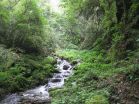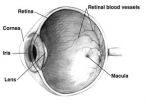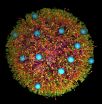(Press-News.org) Good news on the panda front: Turns out they're not quite as delicate - and picky - as thought.
Up until now, information gleaned from 30 years worth of scientific literature suggested that pandas were inflexible about habitat. Those conclusions morphed into conventional wisdom and thus have guided policy in China. But a Michigan State University (MSU) research associate has led a deep dive into aggregate data and emerged with evidence that the endangered animal is more resilient and flexible than previously believed.
Vanessa Hull is a postdoctoral research associate at MSU's Center for Systems Integration and Sustainability (CSIS). She has spent three years stalking giant pandas in China's Wolong Nature Reserve. Given the pandas' elusive nature, Hull had a lot of down time.
So she bided her time plowing through literature on panda habitat selection, discovering inconsistencies and lack of consensus on matters crucial as scientists and policymakers struggle to protect the estimated 1,600 remaining wild giant pandas in the 21,300 square kilometers to which the animals have been relegated.
"Panda habitat selection is a complex process that we are still trying to unravel," said Jianguo "Jack" Liu, Rachel Carson Chair in Sustainability and CSIS director. "Pandas are a part of coupled human and natural systems where humans have changed so much in their habitat."
It has been thought pandas demanded a forest with fairly gentle slope (easier to mosey around in while seeking bamboo) at a certain elevation in original, old forest, an abundance of bamboo, and plenty of distance from people. These recommendations, Hull said, come from often-scant research because pandas are difficult animals to study.
"Pandas are difficult to observe and follow in the wild, we're always 10 steps behind them," Hulls said. "We don't know why they're there - or where they were before and after. There's a lot of guesswork."
Vanessa and her colleagues drew up analysis of all the research projects and sought to separate studies that focus on where pandas live from studies that examine what kind of choices pandas make when multiple types of habitat are available. They discovered that pandas may not be as picky as thought.
The research shows, for instance, that pandas are willing to live in secondary forests - forests that have been logged and have regrown. They also don't seem as selective about slope, and are willing to climb depending
on which of the many varieties of bamboo is growing, or what type of forest it was in. Same for elevation, and the amount of sunshine that hits a piece of panda home.
That's good news. Indications that forests once cut clean by timber harvesting can return to acceptable panda habitat validate current bans on forest harvesting.
They also found that there is a complex relationship between trees and bamboo. Pandas choose different forest types as places to spend their time, as long as bamboo is available.
Hull said consensus would be helpful for future panda habitat research, since the future guarantees change.
"It's exciting to see the flexibility pandas have, or at least see that pandas are choosing areas I didn't think could support them", Hull said. "It gives you hope. They've survived throughout many challenges over so many millions of years, it would be sad to think humans came along and threw it all away. This also suggests we should stay on board and try to make things better for them."
INFORMATION:
The paper, "A synthesis of giant panda habitat selection," is published in Ursus, the journal of the International Association for Bear Research and Management.
Besides Liu and Hull, the article was written by Gary Roloff, MSU associate professor of fisheries and wildlife; Jindong Zhang, a CSIS postdoctoral research assistant; Wei Liu, a CSIS alumnus; Hemin Zhang, Shiqiang Zhou and Jinyan Huang of the China Center for Research and Conservation of the Giant Panda in Wolong; and Zhiyun Ouyang and Weihua Xu of the State Key Laboratory of Urban and Regional Ecology, Research Center for Eco-environmental Sciences, Chinese Academy of Sciences in Beijing.
The National Science Foundation, NASA and MSU AgBioResearch have supported the work.
Irvine, Calif., Dec. 3, 2014 - High fecal counts frequently detected at so-called "baby beaches" may not be diaper-related. UC Irvine researchers found that during summer months, small drainpipes emptying into enclosed ocean bays have a disproportionate impact on calmer waters. The findings were published Tuesday in the journal Environmental Science & Technology.
Researchers have long known that creeks and tributaries foul coastal waters with major winter storm runoff. But dry seasons like the one that just concluded can spell potential peril, too. Runoff from watering ...
When it comes to getting out of a tricky situation, we humans have an evolutionary edge over other primates. Take, as a dramatic example, the Apollo 13 voyage in which engineers, against all odds, improvised a chemical filter on a lunar module to prevent carbon dioxide buildup from killing the crew.
UC Berkeley scientists have found mounting brain evidence that helps explain how humans have excelled at "relational reasoning," a cognitive skill in which we discern patterns and relationships to make sense of seemingly unrelated information, such as solving problems in unfamiliar ...
Scientists have developed a new light-sensitive film that could one day form the basis of a prosthetic retina to help people suffering from retinal damage or degeneration. Hebrew University of Jerusalem researchers collaborated with colleagues from Tel Aviv University and Newcastle University in the research, which was published in the journal Nano Letters.
The retina is a thin layer of tissue at the inner surface of the eye. Composed of light-sensitive nerve cells, it converts images to electrical impulses and sends them to the brain. Damage to the retina from macular ...
A new research brief from the US2010 Project probes the status of minorities in American suburbs. Suburbs in 2010 were as racially and ethnically diverse as were central cities in 1980, and that diversity is still increasing. Yet minorities are not finding equal access to the American dream in the suburbs where they live, a lesson illustrated recently by Ferguson, MO.
Suburbia has always been less segregated than central cities. Segregation is slowly declining between suburban blacks and whites, but has stayed about the same for Hispanics and Asians over three decades. ...
Do you consider yourself a conscientious person? Then sign up for a fixed-rate mortgage. Neurotic? You'll probably opt for home ownership over renting.
According to a new study published in the Journal of Behavioral and Experimental Economics, personality traits are strong indicators of real-estate decisions. The research, by Dr. Danny Ben-Shahar of Tel Aviv University's Faculty of Management and doctoral candidate Roni Golan of the Technion Institute of Technology, finds a correlation between personality and individual real estate choices, and a follow-up study by the ...
Those wishing to prove themselves as "doers" must not only be hands-on and demonstrate proactive behavior but also have social acumen and a feel for favorable opportunities. Those who rely on personal initiative alone will quickly be standing there as an isolated troublemaker. This is what psychologists from the University of Bonn and their colleagues from Florida State University (USA) have discovered through surveying a variety of occupational categories. The results have been published online in the renowned "Journal of Management". The printed version will be published ...
Learning from others and innovation have undoubtedly helped advance civilization. But these behaviours can carry costs as well as benefits. And a new study by an international team of evolutionary biologists sheds light on how one particular cost - increased exposure to parasites - may affect cultural evolution in non-human primates.
The results, published Dec. 3, 2014, in the journal Proceedings of the Royal Society B, suggest that species with members that learn from others suffer from a wider variety of socially transmitted parasites, while innovative, exploratory ...
This news release is available in German.
(Jena/Germany) Jena scientists have been successful in producing highly specific nanoparticles. Depending on the bound dye the particles are guided to the liver or to the kidney and deliver their payload of active ingredients directly to the targeted tissue. Moreover, the dyes enable the tracking of the transport processes by intravital microscopy or, in a non-invasive way, by multi spectral optoacoustic tomography. The reduction of cholesterol production induced by siRNA served as the proof-of-principle for the developed ...
What do lasers, neural networks, and spreading epidemics have in common? They share a most basic feature whereby an initial pulse can propagate through a medium - be it physical, biological or socio-economic, respectively. The challenge is to gain a better understanding - and eventually control - of such systems, allowing them to be applied, for instance to real neural systems. This is the objective of a new theoretical study published in EPJ B by Clemens Bachmair and Eckehard Schöll from the Berlin University of Technology in Germany. Ultimately, with a better theoretical ...
New research from the University of Adelaide has helped to shed light on the complexities of child sleep, and could lead to improved diagnosis of children with sleep-related breathing problems.
For his PhD in the University's School of Medical Sciences, Scott Coussens has been investigating how to accurately measure the level of sleep disturbance being experienced by children, to show whether or not they require treatment.
"Quality sleep is extremely important for children, especially at critical times of development. It can impact on the health of the brain and plays ...




